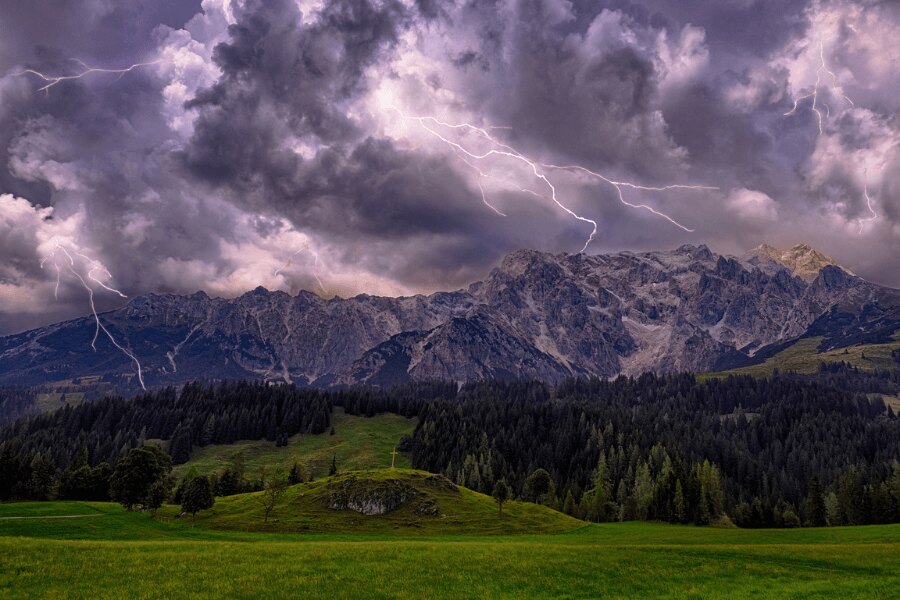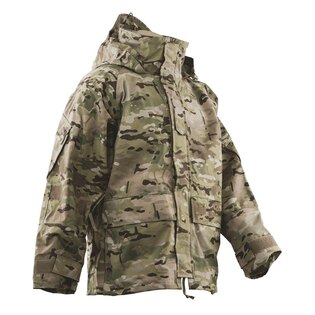What to Do If You Get Caught in a Thunderstorm Outdoors
When we observe a thunderstorm from a safe distance, we might feel a certain level of awe or respect, but for most people, it’s an overwhelmingly positive experience. There are even storm chasers who actively seek out places where lightning is expected, heading there deliberately and willingly. But what if a thunderstorm catches you off guard while you're out in nature?
A Longer Season
Although we don’t have exact statistics, it seems like storm season has been starting earlier in recent years. We tend to associate thunderstorms with summer, mostly July and August, with only the occasional spillover into September. However, in 2023 for instance, thunderstorm season began as early as March—or even late February in some areas.
That means in our climate, we can be hit by a thunderstorm during nearly half the year. So it’s worth revisiting some key safety principles to increase your chances of getting through one unscathed.

The first rule is simple – stay calm! Consider your situation and search for a good shelter.
What Not to Do
A thunderstorm usually announces itself with an eerie silence, followed by powerful gusts of wind and dark, heavy clouds. Visibility drops rapidly, and you realize you won’t make it to the nearest shelter in time.
Assess your situation carefully—and do not, under any circumstances, panic and head off into unknown terrain. You could fall from a cliff or get hopelessly lost. And getting lost without the proper gear, like a compass, map, or navigation device, can be dangerous enough on its own.
So the first rule is simple: stay calm!
The Real Dangers of Thunderstorms
When we think of thunderstorms, lightning immediately comes to mind. And while the odds of being struck are low, taking unnecessary risks can dramatically increase those odds. In the mountains, where safe shelters are scarcer than in lowlands, the risk is even higher.
But lightning isn’t the only hazard. Heavy rain can be a serious issue—especially if you're caught without proper gear in a remote location. Add strong winds and possibly hail into the mix, and the chances of hypothermia or injury rise sharply.
Avoid Dangerous Areas
As a storm approaches, avoid exposed or elevated terrain. Isolated tall objects—like lone trees, rocky peaks, or ridgelines—act like natural lightning rods. Standing near or under them is practically inviting a strike.
Also steer clear of rock overhangs or shallow caves. If you must use a cave for shelter, it should be deep enough that lightning won’t travel through the rock and reach you. In most natural settings, such caves are rare. In general, it's better to get wet than to be struck by lightning.
Waterlogged ground is also a hazard. Standing in or near puddles can turn you into a conductor. Avoid wide-open spaces, and don’t huddle together in a group—spread out, keeping a few meters between each person. While lone trees are risky, dense groups of trees (i.e., forests) tend to offer relatively safer shelter.
Via ferrata routes pose another problem. These metal climbing paths effectively act as giant lightning rods. If a storm is approaching, unclip yourself immediately and move several meters away from the structure if you can.
Find Shelter
If you're lucky, you might come across a shelter—like a hiking hut, lean-to, or even a car. If you’re in open terrain, look for the lowest point in the landscape or a natural depression. Sit down there and wait for the storm to pass.
Use something insulating to sit on, like a piece of clothing or your backpack. Keep your feet together and tuck them under your chin.

If you are in open terrain, look for the lowest points of the terrain, or depressions.
Ditch the Metal
Before the lightning gets close, get rid of any metal objects you’re carrying—trekking poles, carabiners, or even your phone. Of course, tossing away an expensive smartphone might not seem appealing (especially if it holds your payment methods), so it’s best to plan ahead: store your phone and other sensitive electronics in a waterproof (ideally watertight) case and place it a safe distance from yourself until the storm is over.
Watch the Forecast
During storm season, check the weather forecast regularly—ideally every hour or so. Models and predictions can change rapidly. Also train yourself to recognize the early signs of a storm: dark clouds forming at high altitudes, a sudden drop in wind, and increasing gusts are all warning signals.
And as soon as you hear distant thunder, it’s time to head for safety. Get off the ridge, into the forest, or use your map to locate the nearest shelter—and move quickly to reach it.
Readers are further interested































































































































































































